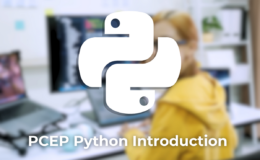
Description
This 10 day, intensive, hands-on course will teach you how to integrate Agile Intensive hands-on course focusing on integrating Agile Development, Test Driven Development (TDD), Object Oriented Principles and Practices, Design Patterns, and Lightweight Design. There’s a strong emphasis on leveraging best practices to improve software craftsmanship and deliver highly valuable software.
The course includes:
Teams of 2-3 developers engage in a Socratic learning approach, practicing Agile principles by collaboratively building a single working software piece over a 10-day period.
Like real-world scenarios, teams are not provided with all requirements upfront and are not given step-by-step instructions, fostering adaptability and problem-solving skills.
Teams are expected to consistently deliver quality code, with typical iterations lasting only 20 minutes.
“Do The Code Right” approach is emphasized, reminding teams to Design-Test (first!)-Code-Refactor every 20-30 minutes, promoting a cycle of continuous improvement and adherence to best practices.
Audience
This course is designed for teams of programmers with experience in basic full-stack development.
Prerequisites
- Six months or more of programming experience in an object-oriented language
Objectives
Five Core Concepts, including Test Driven Development, Object-Oriented Principles, and Lightweight Design.
-
- Apply Agile principles in team projects to deliver high-quality, valuable software iteratively
- Implement Test-Driven Development (TDD) to ensure code quality and maintainability
- Demonstrate understanding of Object Oriented Principles and Practices in software design
- Utilize Design Patterns to solve common design problems efficiently
- Apply Lightweight Design principles to create flexible, maintainable software solutions.
Outline
Module 1: Introduction to TDD
-
- Purpose and benefits of TDD
- Motivation behind TDD: why it’s crucial in modern software development
- Overview of the TDD cycle: Red-Green-Refactor
Module 2: Test Driven Development (TDD)
-
- Principles and Techniques
- TDD Metaphors
- Benefits, Challenges and Limitations
- Handling Requirements Change
- Characteristics of good tests
- Revisit Anti Patterns
Module 3: Testable Designs (Mocks, Fakes and Stubs)
-
- Creating testable Code, If you cannot test it what use is it?
- Strategies for Testable Code
- Test Unfriendly features
- Interfaces are great!
- Stubs, Fakes and Mocks
- Mocks as Collaborators
- Mocks and return values, void methods, frequency calls and ordering
Module 4: OO Building Blocks
-
- Classes and Objects
- Operations and Methods
- Instantiation of Objects
- Inheritance
- Overloading
- Overriding
- Interfaces
- Abstract Classes
Module 5: Encapsulation
-
- Data Hiding
- Type Hiding
- Polymorphism
- Associations
- Dependency and Delegation
- Aggregation and Composition
- Coupling
- Cohesion
- Redundancy
- SOLID & DRY
Module 6: Lightweight Design
-
- First Principles
- When to Design in Agile
- User Stories
- Class Diagrams
- Review Checks
Module 7: Commonality and Variance
-
- Techniques for Translating from Requirements
- Fundamentals of Commonality/Variability Analysis (CVA)
- CRC Cards
- How to Handle Variations as We Get New Requirements
- Understanding and Using Factories
Module 8: Complete Code
-
- Doing the Simplest Thing Possible
- Testable
- Proper Encapsulation
- Strong Cohesion
- Correct Coupling
- Readability
Module 9: Delegation
-
- Delegation and Why it is so Powerful
- How Various Design Patterns Leverage Delegation
- Adapter Pattern
- Strategy Pattern
Module 10: Refactoring
-
- What is Refactoring
- Why Refactor
- Handling API Changes
- Identifying Code Smells
- Refactoring and Testing
Module 11: Using Abstraction
-
- Understanding the Template Method Pattern
- Importance of Depending on Abstraction
- Serializing Objects to XML
Module 12: Delegation
-
- Delegation and Why it is so Powerful
- How Various Design Patterns Leverage Delegation
- Adapter Pattern
- Strategy Pattern
Module 13: MVC and MVVM
-
- Components and Responsibilities of Each Architecture
- Benefits and Drawbacks of Each Architecture
Module 14: Managing Access
-
- The Proxy Pattern
- Lazy Instantiation
- Cross-cutting Concerns
Module 15: Dynamic Responsibilities
-
- Adding Flexible Functionality
- The Decorator Pattern
- The Observer Pattern
- Writing a Custom Decorator





Leave a Comment